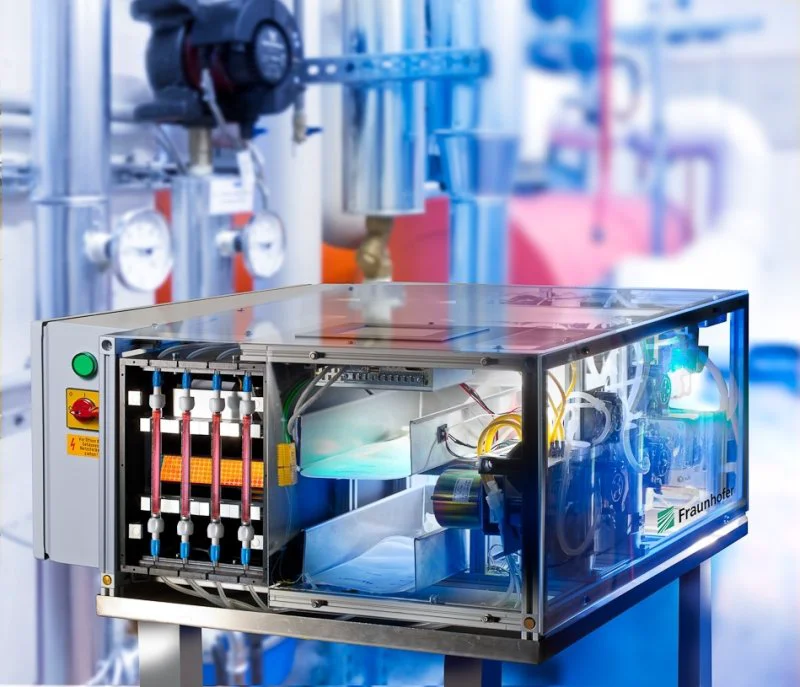Food-borne illnesses are a growing problem. CRISPR-based biosensing may be key to food safety
Food-borne illnesses are a growing problem. CRISPR-based biosensing may be key to food safety


The availability of safe food is crucial for maintaining both nutritional well-being and overall health security. Estimates indicate that 1 in 10 people fall ill after consuming contaminated food, and globally, 420,000 people die each year due to unsafe food consumption….Traditional methods of detecting foodborne pathogens and other contaminants are often time-consuming and demand technologies that are rapid, highly sensitive, and hold a point-of-use application. Biosensors that utilise CRISPR (clustered regularly interspaced short palindromic repeats) technology stand as a suitable alternative offering immense potential for research and development (R&D), and scalability, thus ensuring food safety.
Several kinds of CRISPR-based biosensor technology are currently under R&D for food safety applications. Notably, the detection of Listeria monocytogenes, the cause of listeriosis—a major foodborne illness—was facilitated through the development of a fluorescent-based CRISPR-Cas biosensor. A biosensor to detect E. coli O157:H7 in milk samples, which causes severe illness, was recently developed as well.
This is an excerpt. Read the original post here

 | Videos | More... |

Video: Nuclear energy will destroy us? Global warming is an existential threat? Chemicals are massacring bees? Donate to the Green Industrial Complex!
 | Bees & Pollinators | More... |

GLP podcast: Science journalism is a mess. Here’s how to fix it

Mosquito massacre: Can we safely tackle malaria with a CRISPR gene drive?

Are we facing an ‘Insect Apocalypse’ caused by ‘intensive, industrial’ farming and agricultural chemicals? The media say yes; Science says ‘no’
 | Infographics | More... |

Infographic: Global regulatory and health research agencies on whether glyphosate causes cancer
 | GMO FAQs | More... |

Why is there controversy over GMO foods but not GMO drugs?

How are GMOs labeled around the world?

How does genetic engineering differ from conventional breeding?
 | GLP Profiles | More... |

Alex Jones: Right-wing conspiracy theorist stokes fear of GMOs, pesticides to sell ‘health supplements’




 A single high dose of LSD can ease anxiety and depression for months
A single high dose of LSD can ease anxiety and depression for months CRISPR pork: U.S. approves first gene-edited pigs for consumption
CRISPR pork: U.S. approves first gene-edited pigs for consumption From plastic coasters to human hearts: Inside the race to print the human body
From plastic coasters to human hearts: Inside the race to print the human body ‘SuperAgers’: Why some people have the brains and memory capacity of people decades younger
‘SuperAgers’: Why some people have the brains and memory capacity of people decades younger  Baby food panic, brought to you by trial lawyers hoping to prosecute by press release
Baby food panic, brought to you by trial lawyers hoping to prosecute by press release From ‘Frankenfood’ to superfood: Can the purple tomato overcome GMO myths to win over consumers?
From ‘Frankenfood’ to superfood: Can the purple tomato overcome GMO myths to win over consumers? Viewpoint: Life and death decisions: RFK, Jr.’s shady FDA “expert panels” operate in secret with no transcripts or conflict of interest reviews
Viewpoint: Life and death decisions: RFK, Jr.’s shady FDA “expert panels” operate in secret with no transcripts or conflict of interest reviews When farmers deny science: The hypocrisy hurting agriculture’s credibility
When farmers deny science: The hypocrisy hurting agriculture’s credibility
